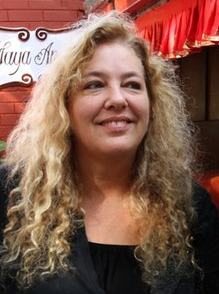Measuring Your Research Impact
This blog is part of the TESOL Research Professional Council (RPC) Blog series.
Throughout my career, although I engaged in all the professional pursuits connected to an academic career (e.g., teaching, research, publication), I didn’t concern myself with the legacy I was creating — and hence evaluating my impact — until recently, when I received a very flattering invitation to author a book on my “greatest hits” in language assessment literacy. This invitation coincided with a milestone (60!) birthday, the age at which many professionals consider retirement or at least slowing down academically (or so I’m told!). After these two experiences, my journey to measure my own professional impact began. How would I know which publications to include in the book? A quick review of the literature was informative.
Traditionally, the number of academic citations of an educator’s published work has been the primary measurement of impact. However, the literature revealed other traditional and alternative measures, including
- author IDs,
- the h-index,
- the journal impact factor (JIF), and
Traditional Measures
Author IDs
Author IDs help promote you and your research by ensuring that your work doesn’t get confused with that of another researcher with the same or a similar name and that your citations don’t get “lost” through misspellings. Author ID tools for building your profile include ORCID.org, ResearcherID, ResearchGate, Academia.edu, Scopus Author Profiles, and Google Scholar. An added advantage of author IDs is that they connect you to an online community of like-minded professionals, which could have an impact on your research growth. Sign up for a few — it might look cumbersome at first, but, once set up, most updates become automated.
The H-Index
The h-index, found on your Google Scholar profile, combines the number of papers you have with the number of citations into a single number. According to its creator, the h-index is based on 20 years of research; an h-index of 20 is good, 40 is outstanding, and 60 is truly exceptional. It is important to note that neither a few highly cited papers nor a long list of papers with only a few (or no!) citations will yield a high h-index. And, keep in mind that an individual’s h-index may vary because academic databases index journals differently.
Journal Impact Factor
The JIF, a well-known indicator of journal quality, measures citations of work in a journal over the past two years. In most fields of study, a JIF of 10+ is excellent, and, in many, anything over 3 is considered good. So, while searching for a home for your work that will help engage with your audience, consider the publication’s impact factor.
Alternative Metrics
Alternative metrics, or altmetrics, are a way of understanding who is engaging with your research online and what they are saying about it. Altmetrics are meant to complement, not replace, traditional measures of impact. Examples include the following:
- Mentions on social media sites, like Facebook, LinkedIn, Twitter, or online news sites
- Engagement on researcher platforms
- Exports of your citations to citation management systems, like Mendeley or Zotero
- Downloads and page views of your work
- Comments on your work in blogs or in other online forums
As you can see, there are a variety of ways to assess your own research impact. I began my examination of my research impact later in my career. Please share your experiences by replying to this post.
See other posts in the TESOL RPC Blog series.

